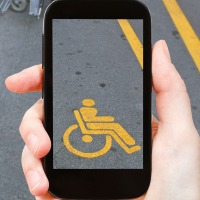 When creating solutions for the web and mobile, one of the first things new designers and developers are taught is accessibility. In its broadest definition, accessibility includes tailoring the interface, and all usability aspects of the product, in order to make it easier for people with disabilities to access and utilize your solution. What we are seeing today, is the concepts of accessibility being applied to consumer technology to make these simplifying solutions available and beneficial for everyone.
When creating solutions for the web and mobile, one of the first things new designers and developers are taught is accessibility. In its broadest definition, accessibility includes tailoring the interface, and all usability aspects of the product, in order to make it easier for people with disabilities to access and utilize your solution. What we are seeing today, is the concepts of accessibility being applied to consumer technology to make these simplifying solutions available and beneficial for everyone.
One of the clearest, most recent examples involves Amazon’s decision to go click-free. Amazon initially designed voice based ordering to allow someone with physical limitations to make a purchase without the need for their hands and typing. And while this technology benefits people with disabilities, it has now been embedded in their Amazon Echo digital assistant tool, allowing everyone the opportunity to go click-free and makes ordering friction-less for everyone.
Another example of how accessibility and technology are changing lives and the economy is in on-demand services. Ride-sharing provider Uber recently shared how their accessibility program is benefiting not only users, but also their “partner” drivers. These drivers are afforded not only their livelihood, but also are given the chance to get out into, and engage with, their communities because of these technologies.
So while adaptive and mobile technology has created increased accessibility for people with disabilities, it has also provided an opportunity that serves us all.
Are you ready for the future? Let us help you enhance the accessibility of your mobile app.






